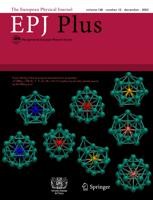Beam balance designs could elucidate the origins of dark energy
With some improvements, the instrument could help physicists to identify the mysterious origins of dark energy.
New York | Heidelberg, 5 March 2024
 One of the greatest problems in modern physics is to reconcile the enormous difference between the energy carried by random fluctuations in the vacuum of space, and the dark energy driving the universe’s expansion.
One of the greatest problems in modern physics is to reconcile the enormous difference between the energy carried by random fluctuations in the vacuum of space, and the dark energy driving the universe’s expansion.
Through new research published in EPJ Plus, researchers led by Enrico Calloni at the University of Naples Federico II, Italy, have unveiled a prototype for an ultra-precise beam balance instrument, which they hope could be used to measure the interaction between these vacuum fluctuations and gravitational fields. With some further improvements, the instrument could eventually enable researchers to shed new light on the enigmatic origins of dark energy.
Inside a vacuum, electromagnetic waves are constantly emerging and disappearing through random fluctuations, so that even though the space doesn’t contain any matter, it still carries a certain amount of energy. Through their research, Calloni’s team aim to measure the influence of these fluctuations using a state-of-the-art beam balance.
Designed to operate at temperatures of 90K (-183°C), the team’s instrument will carry a small sample of a high-temperature superconductor at one end of the beam, initially balanced out by counterweights on the other end. Through quantum effects triggered by its interaction with random vacuum fluctuations, they predict that this sample should undergo minuscule changes in weight.
These changes in turn could be detected using interferometry. This would involve comparing the distances travelled by both parts of a split light beam as they bounce back from each end of beam – created due to the new difference in weight between the superconductor sample and the counterweight.
The team’s study details their initial tests for a prototype for their beam balance at a lab in Sardinia, which experiences extremely low levels of seismic noise. Based on their early results, Calloni and colleagues are now confident that when complete, their final experiment would be sensitive enough to pick up the interaction between vacuum fluctuations and gravitational fields.
References: Allocca, A., Avino, S., Calloni, E. et al. Thermal noise-limited beam balance as prototype of the Archimedes vacuum weight experiment and B-L dark photon search. Eur. Phys. J. Plus 139, 158 (2024). https://doi.org/10.1140/epjp/s13360-024-04920-x
Further Information
For more information visit: www.epj.org
Services for Journalists
The full-text article is available here.
Contact
Sabine Lehr | Springer | Physics Editorial Department
tel +49-6221-487-8336 | sabine.lehr@springer.com
